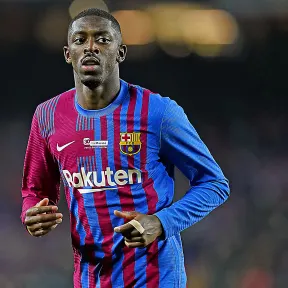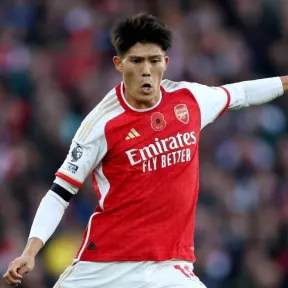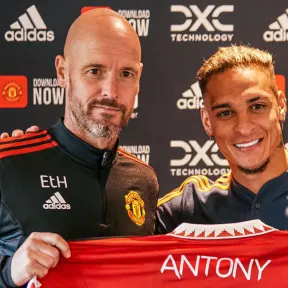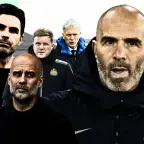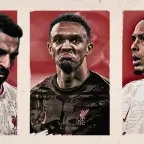Casemiro is coming - but Man Utd still need De Jong
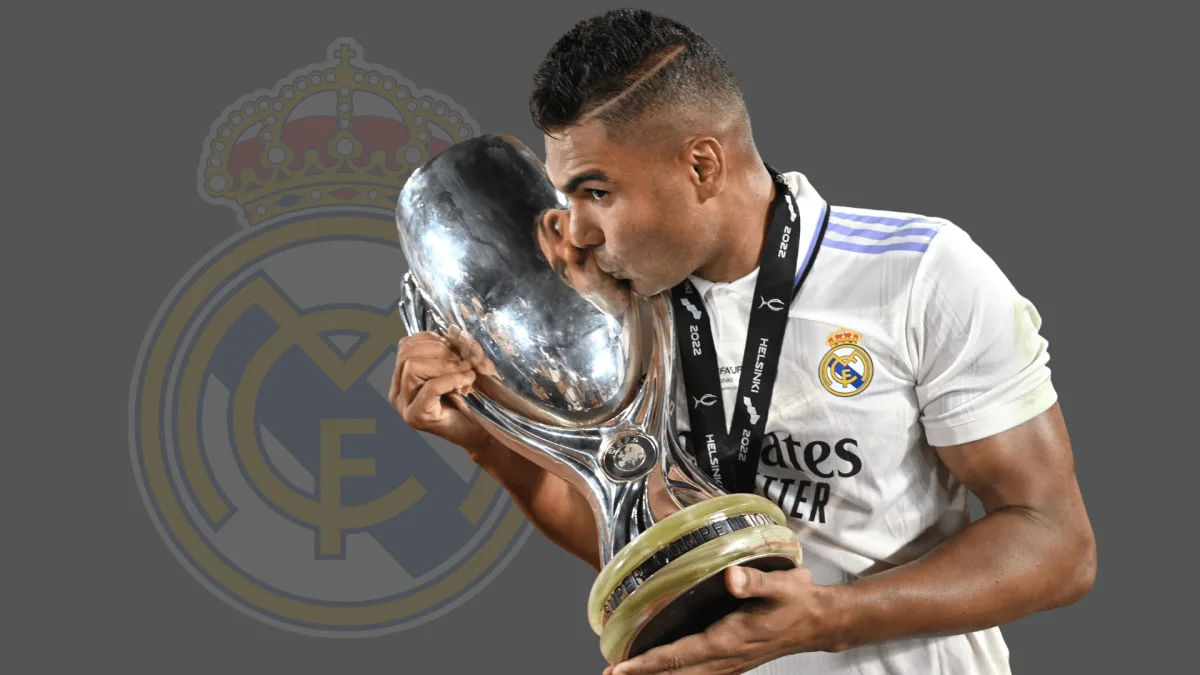
After being linked with every man and his dog over the last couple of weeks, Manchester United finally look set to actually complete a signing. Casemiro is primed to head over from Real Madrid, who will reportedly receive €70 million plus potential add-ons to part ways with the 30-year-old Brazil midfielder.
It is no secret that Manchester United desperately need a deep-lying midfielder. For the duration of the summer transfer window, they have been busy chasing Barcelona’s Frenkie de Jong in a long-running saga that is set to continue even with Casemiro's arrival.
And while there can be no doubt about the quality of the Brazil international, manager Erik ten Hag still needs a player in the mould of the Dutchman to get the best from his squad. Here's why.
2021/22 season at Real Madrid
The first thing we must do is understand what sort of a deep-lying midfielder Casemiro is, and the best way to do that is to look back at his most recent season.
His pizza chart paints the picture of a very well-rounded player who is great at disrupting opposition moves and also notably aids his side’s ball progression.
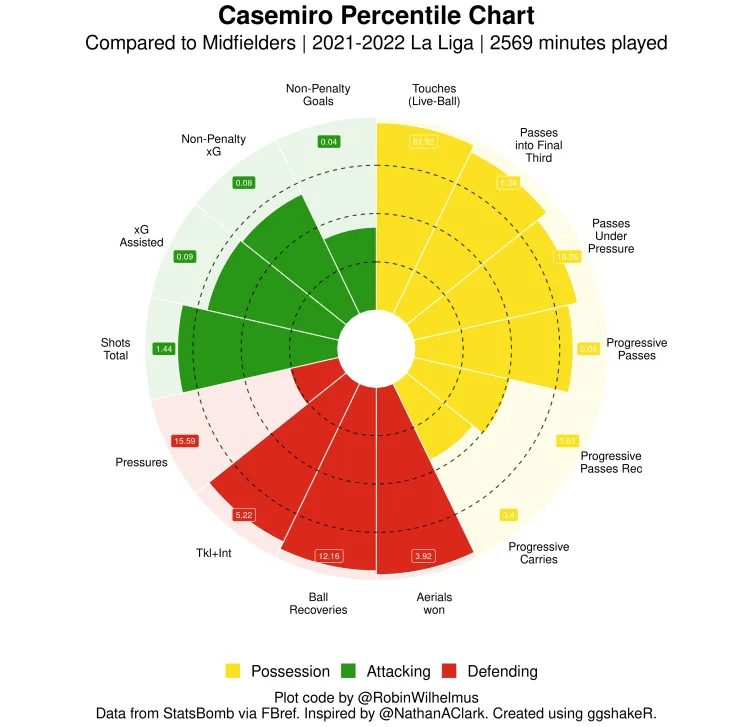
Of course, it is very important to remember that these stats are not possession-weighted, meaning that they are influenced by team style. For a player in a possession-dominant side like Real Madrid, this reinforces that Casemiro’s defensive ability is truly world-class, but his ball use should be investigated further – specifically his progressive passing since he is not a prolific carrier anyway.
Firstly, let us take a look at where exactly Casemiro did his work on the pitch. Playing at the heart of Real Madrid’s midfield in a 4-3-3 formation, the Brazil international was unsurprisingly mostly involved in and around the centre circle, slightly more so in his own half than the opposition’s.
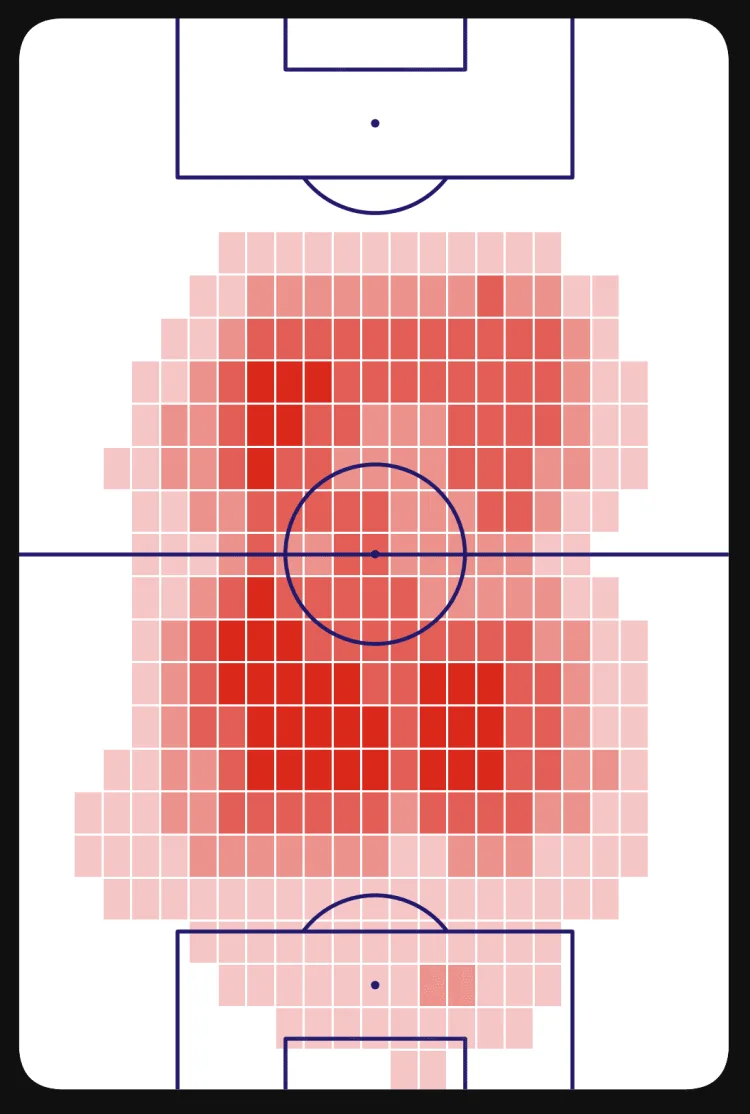
Now, diving straight into his progressive passes map from last season, we get to see some interesting patterns. Relative to his heatmap, Casemiro’s progressive passes rarely originated from deeper areas, and even when they did, they were long or medium-range passes out to the flanks and not the centre of the pitch, which is of course the real danger area.
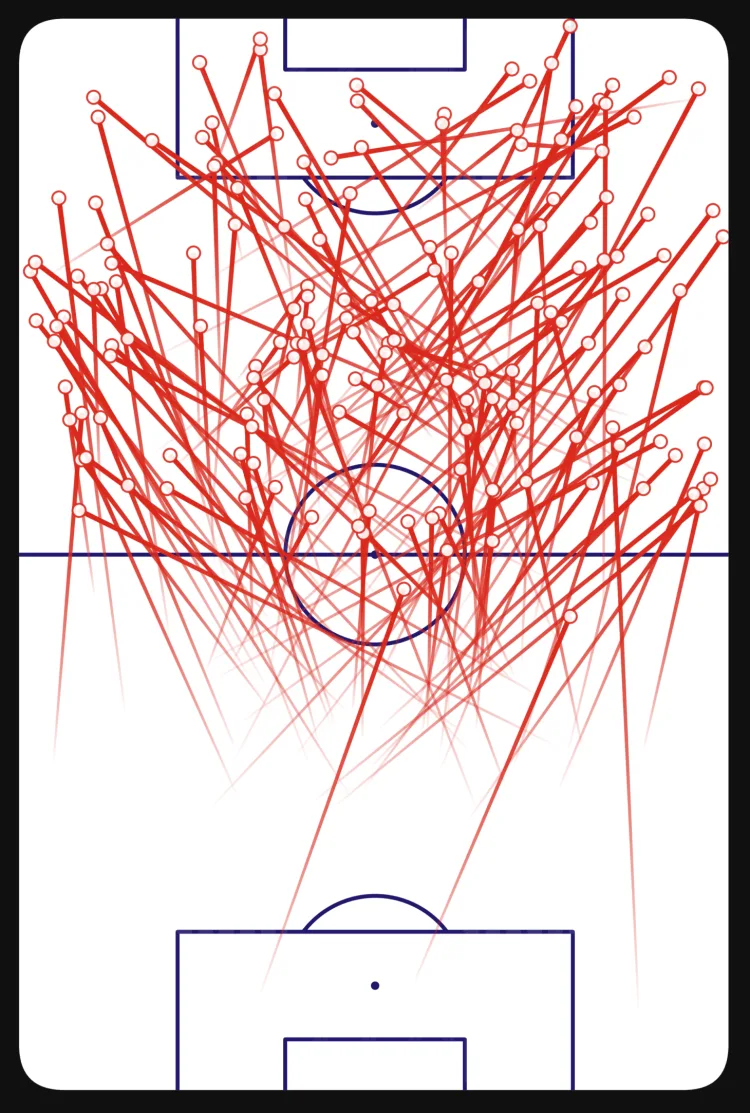
What this means is that Casemiro was not a line-breaking progressive passer. Instead, he preferred to look for players in space on the wings rather than truly puncturing the opposition’s defensive shape.
This point is proven by the xT (Expected Threat) stats. Compared to his usual midfield compatriots, Luka Modric and Toni Kroos, Casemiro generated substantially less xT from open play last season.
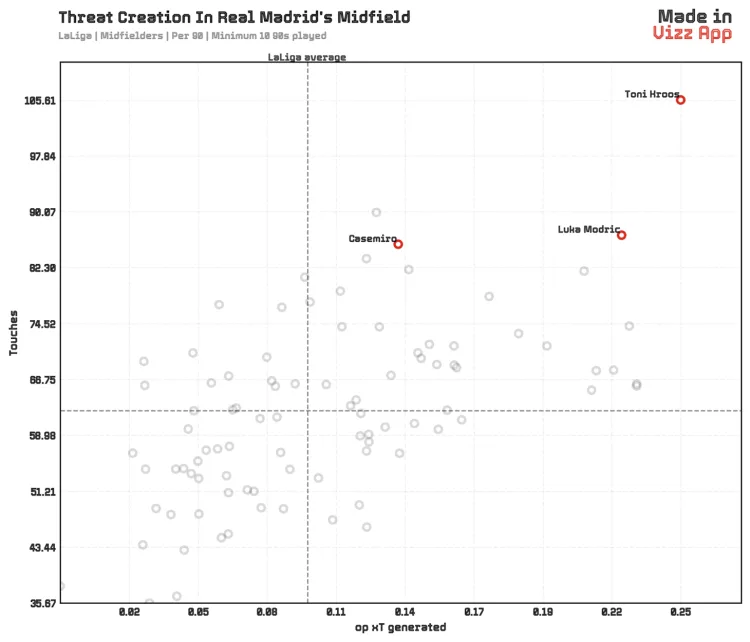
This is not necessarily a weakness of Casemiro, but rather a natural byproduct of the role he was asked to operate in and the type of player he is. His main job was to provide defensive security against transitions, and in possession, allow his team-mates to take care of the majority of the ball progression.
He certainly fulfilled the defensive side of his role to a tee, as his defensive actions heatmap reiterates.
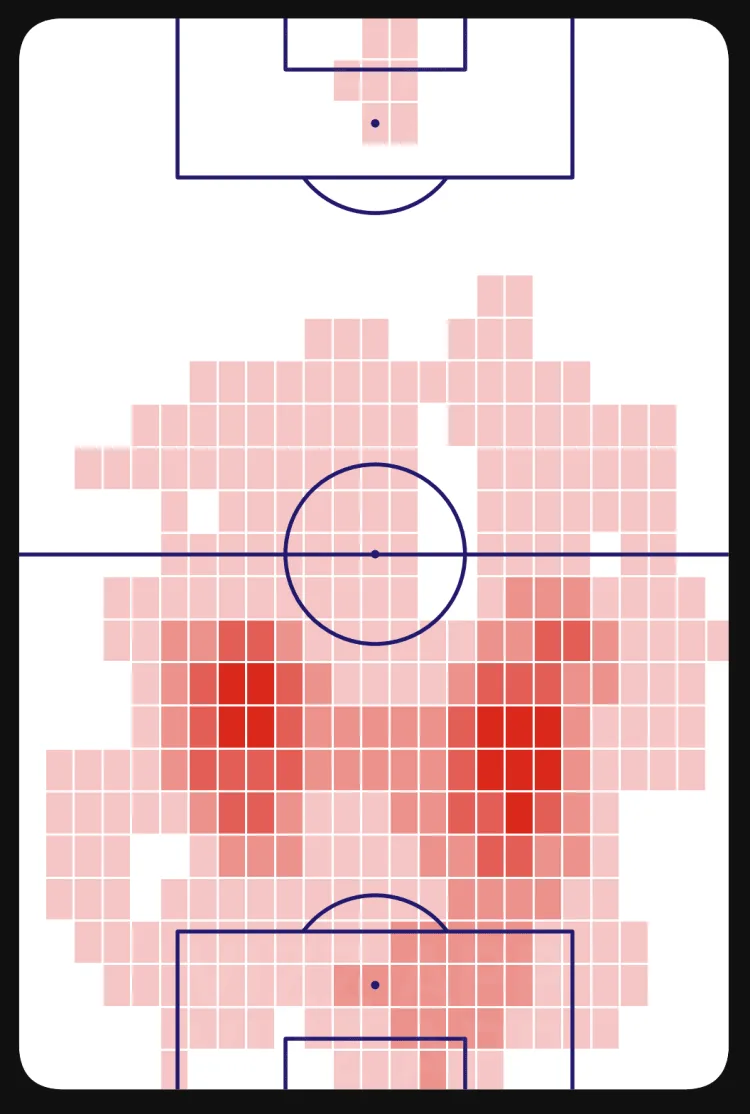
On the other hand, Casemiro is not known for the security he provides in possession. His pass completion rate of 86.4% last season was on the lower side for deep-lying midfielders at possession-dominant clubs, and once again, he was third-best compared to Modric and Kroos in this regard.
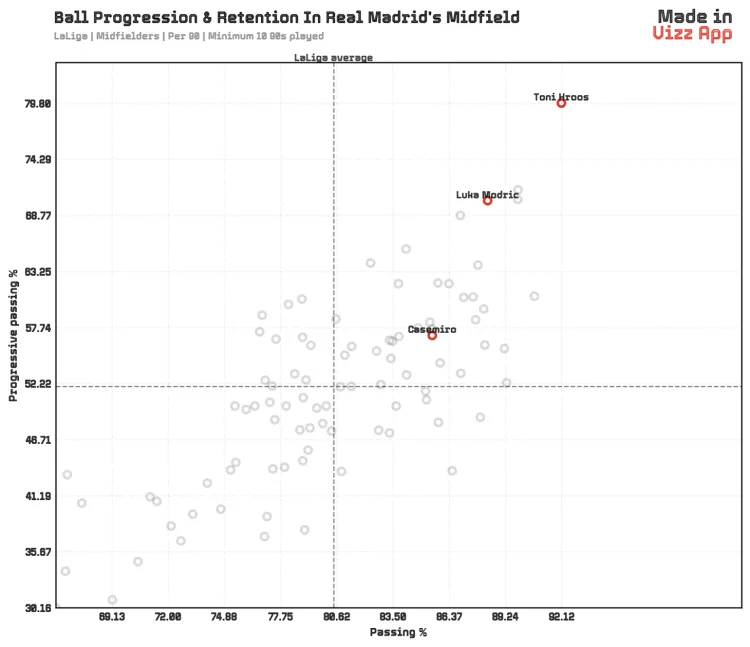
Casemiro’s main role at Real Madrid was disrupting opposition attacks and winning the ball back for his side, but he was not a key figure in terms of ball progression.
Manchester United’s requirements
That is very relevant because that description does not match what Manchester United require.
Under Ten Hag, Manchester United have used a 4-3-3 formation. From a tactical point of view, they have primarily struggled in two aspects in midfield, namely central ball progression and defending against transitions. Casemiro can certainly help with one of those, but he will not be a positive influence to the former.
The trouble is that Casemiro’s new team-mates are not at the same level as his old ones. Comparing the xT generated from open play and progressive passing of Manchester United’s midfield trio from last season to Kroos and Modric shows a stark contrast.
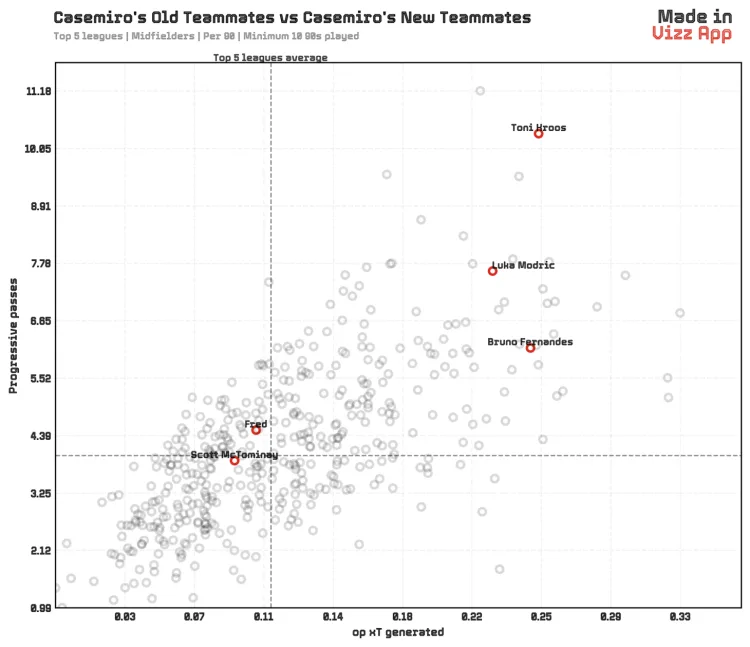
Man Utd fans will not be surprised to learn that Fred and McTominay did not show the capabilities to be prolific ball progressors, and while Fernandes created a fair bit of attacking threat thanks to the nature of his advanced role, his ball progression took a hit as a result.
Therefore, we can say with some certainty that Casemiro is not the answer to Manchester United’s ball progression issue in midfield.
Why Casemiro is the wrong type of midfielder for Manchester United
Before we establish why Casemiro is the wrong type of midfielder for Manchester United, one thing to keep in mind is that there are high-quality options out there who can solve both of Manchester United’s midfield problems. What's most worrying for fans of the Old Trafford side that there are no logical reasons for these players not to be signed.
Now, even if we were to assume that Man Utd could only sign a midfielder to solve one of those problems, then the correct issue to target would be the lack of ball progression. This is because by progressing the ball better, United would naturally limit the number of transitions they conceded by simply keeping more possession. The inverse is not true, however – United cannot progress the ball better by limiting the number of transitions conceded.
A player like De Jong would have been a more sensible addition to the squad in spite of his defensive weaknesses relative to Casemiro. In fact, the two are almost at the opposite ends of the style spectrum of deep-lying midfielders, and Man Utd's decision to stop pursuing one for the other is very puzzling.
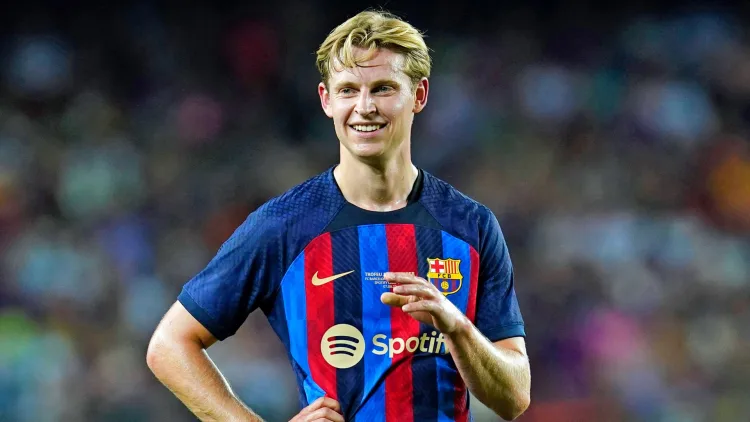
Clearly, this appears to be a panic buy from United in response to their terrible start to the season and the disgruntlement among the supporters. Perhaps to combat that, they have decided to sign a big-name player rather than making a smart investment in someone who can contribute to solving both problems and be a long-term asset.
Casemiro is set to be the second-most expensive footballer aged over 30 when this signing goes through, and while his quality merits such a high transfer fee, offering him a five-year contract worth €300,000 per week might not look like the smartest financial decision in 2027.
He is not the perfect stylistic fit for Ten Hag's side, who undoubtedly could have signed someone younger who fits their system a lot better for this amount of money. Nonetheless, this is not a categorically bad piece of business, and it can certainly be further salvaged by signing a midfielder who excels at ball progression from deep areas.
Casemiro will unquestionably improve Manchester United’s squad, but he will not single-handedly make them good enough.

